The national flag of Tanzania is a dynamic and deeply symbolic representation of the East African nation's rich natural environment, its people, and its aspirations for unity, peace, and progress. Adopted on April 26, 1964, following the union of Tanganyika and Zanzibar to form the United Republic of Tanzania, the flag ingeniously combines elements from the flags of its two constituent parts, creating a distinctive and harmonious emblem that speaks to the nation's unique history and identity.
Design and Symbolism: A Tapestry of National Identity
The flag of Tanzania features a yellow-edged black diagonal band, which starts from the lower hoist (bottom left) corner and ascends to the upper fly (top right) corner. The upper triangle is green, and the lower triangle is blue. Each color and the diagonal arrangement hold profound significance:
-
Green Triangle (Upper Hoist): The upper triangle, colored a vibrant green, represents the rich and fertile agricultural lands of Tanzania. This color symbolizes the abundant natural resources, the lush vegetation, and the agricultural backbone of the nation, emphasizing its reliance on its land for sustenance and prosperity. It speaks to the country's diverse ecosystems, from vast savannahs to dense forests, and the importance of environmental preservation for future generations.
-
Black Diagonal Band (Central): The prominent black diagonal band, stretching across the flag, is the most powerful human element. It symbolizes the native African people of Tanzania – their strength, their determination, and their collective identity. This band represents the unity of the diverse ethnic groups that make up the Tanzanian population, emphasizing their shared heritage and their commitment to building a single, cohesive nation. It is a tribute to the resilience and spirit of the Tanzanian people.
-
Yellow Fimbriations (Edges of Black Band): The black band is bordered on both sides by narrow yellow stripes, known as fimbriations. Yellow, often associated with mineral wealth and natural resources, specifically represents the abundant mineral deposits found across Tanzania. This includes gold, diamonds, tanzanite, and other valuable minerals. These yellow edges symbolize the nation's potential for economic prosperity and its natural endowments, highlighting the wealth beneath its soil. They also represent the bright future and golden opportunities that lie ahead for the country.
-
Blue Triangle (Lower Fly): The lower triangle, a serene blue, represents the Indian Ocean, which borders Tanzania's eastern coastline, as well as the numerous lakes and rivers found within the country. This blue signifies the water resources vital for life and development, including the Great Lakes (Victoria, Tanganyika, and Nyasa/Malawi), which are shared with neighboring countries. It also embodies peace, tranquility, and the vast aquatic environment that supports marine life and provides trade routes.
Dimensions and Proportions:
The official proportions of the Tanzanian flag are a width-to-length ratio of 2:3. The diagonal black band, along with its yellow fimbriations, is precisely positioned. The width of the black band is proportioned so that it appears visually balanced against the green and blue triangles. The yellow fimbriations are notably narrower than the black band itself, providing a distinct outline without overpowering the primary colors. These specifications ensure consistency and aesthetic harmony across all reproductions of the flag.
History and Evolution: A Union Forged in Symbolism
The history of the Tanzanian flag is intimately linked to the formation of the United Republic of Tanzania itself. Before 1964, Tanganyika and Zanzibar were separate entities, each with its own flag.
-
Tanganyika's Flag (1961-1964): Upon gaining independence from Britain on December 9, 1961, Tanganyika adopted a flag consisting of horizontal stripes of green, black, and green, separated by narrow yellow fimbriations. This design was chosen after a public competition. The green symbolized the land, the black represented the people, and the yellow fimbriations stood for the mineral wealth.
-
Zanzibar's Flag (1963-1964): Zanzibar, after achieving independence from Britain on December 10, 1963, and experiencing a revolution in January 1964, initially adopted a flag of blue, black, and green horizontal stripes. However, after the revolution, a new flag was adopted, a horizontal tricolor of blue, black, and green.
The union of Tanganyika and Zanzibar on April 26, 1964, necessitated a new national flag that would symbolize their unity. The designers brilliantly combined elements from both pre-existing flags: the green and black from Tanganyika's flag and the blue from Zanzibar's flag. The diagonal arrangement was a new and innovative feature, providing a dynamic visual representation of the journey and unity. The yellow fimbriations were retained from Tanganyika's flag. This seamless integration resulted in the unique and meaningful flag that is known today, representing the successful merger of two distinct entities into one cohesive nation. The flag's design has remained unchanged since its adoption, a testament to its powerful initial symbolism.
Regional Context and East African Identity:
Tanzania is a large East African country, bordered by Kenya and Uganda to the north; Rwanda, Burundi, and the Democratic Republic of the Congo to the west; Zambia, Malawi, and Mozambique to the south; and the Indian Ocean to the east. Its flag, with its vibrant colors and clear symbolism, positions Tanzania as a key player in the East African Community (EAC) and the broader African continent.
While not strictly adhering to the Pan-African colors of red, yellow, and green (as seen in many West African flags), the Tanzanian flag still uses colors that are common across African symbolism. Its unique diagonal design sets it apart, reflecting Tanzania's specific path to nationhood through the union of two distinct states. The flag represents Tanzania's commitment to regional cooperation, peace, and economic development, reflecting its leadership role in various African initiatives and organizations. It embodies a blend of national pride and a wider African identity.
Interesting Facts:
-
Union Flag: The flag's design is a direct result of the union of Tanganyika and Zanzibar in 1964, symbolizing their integration into a single nation.
-
Unique Diagonal Design: The diagonal band is a distinctive feature, making it easily recognizable among world flags.
-
Designed for Unity: The elements from both former flags (Tanganyika and Zanzibar) were carefully blended to represent the new United Republic.
-
Symbolic Colors: Each color on the flag has a clear and defined meaning related to the country's natural resources, people, and environment.
-
No Coat of Arms/Symbols: Unlike some flags that incorporate a coat of arms or intricate symbols, the Tanzanian flag relies purely on its colors and geometric arrangement for its powerful message.
-
Consistency: The flag has remained unchanged since its adoption, reflecting stability and enduring national pride.
Significance for the Inhabitants: A Banner of Unity, Peace, and Prosperity
For the people of Tanzania, the national flag is much more than a piece of cloth; it is a profound symbol of their nationhood, their unity, and their collective journey. It embodies the success of the union between Tanganyika and Zanzibar, a testament to the ability of diverse peoples to come together under a common identity.
The green symbolizes the bounty of their land, reminding them of the agricultural heritage and the importance of stewardship over their natural environment. The black band proudly represents the African people themselves, celebrating their strength, resilience, and the rich cultural diversity that defines Tanzania. The yellow fimbriations evoke the nation's untapped potential and its aspirations for economic prosperity through its mineral wealth. Finally, the blue triangle signifies the vital water resources and the peace that prevails across the nation, fostering a sense of tranquility and stability.
During national celebrations, such as Union Day (April 26th), Independence Day (December 9th), and other important events, the flag is proudly displayed across the country – on public buildings, private homes, schools, and even on traditional dhows sailing the Indian Ocean. It serves as a powerful unifying force, transcending ethnic, religious, and geographical divides, fostering a deep sense of national pride and shared destiny among all Tanzanians. The flag is a constant reminder of their unique history, their commitment to peace, and their collective efforts towards building a prosperous and harmonious future. It is a beacon of hope and a cherished emblem of their sovereign and united republic.
In the demonstration images, full-size flags are shown with proportions of 2:3, and hand-held flags with proportions of 1:2.


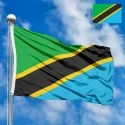
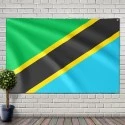
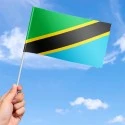



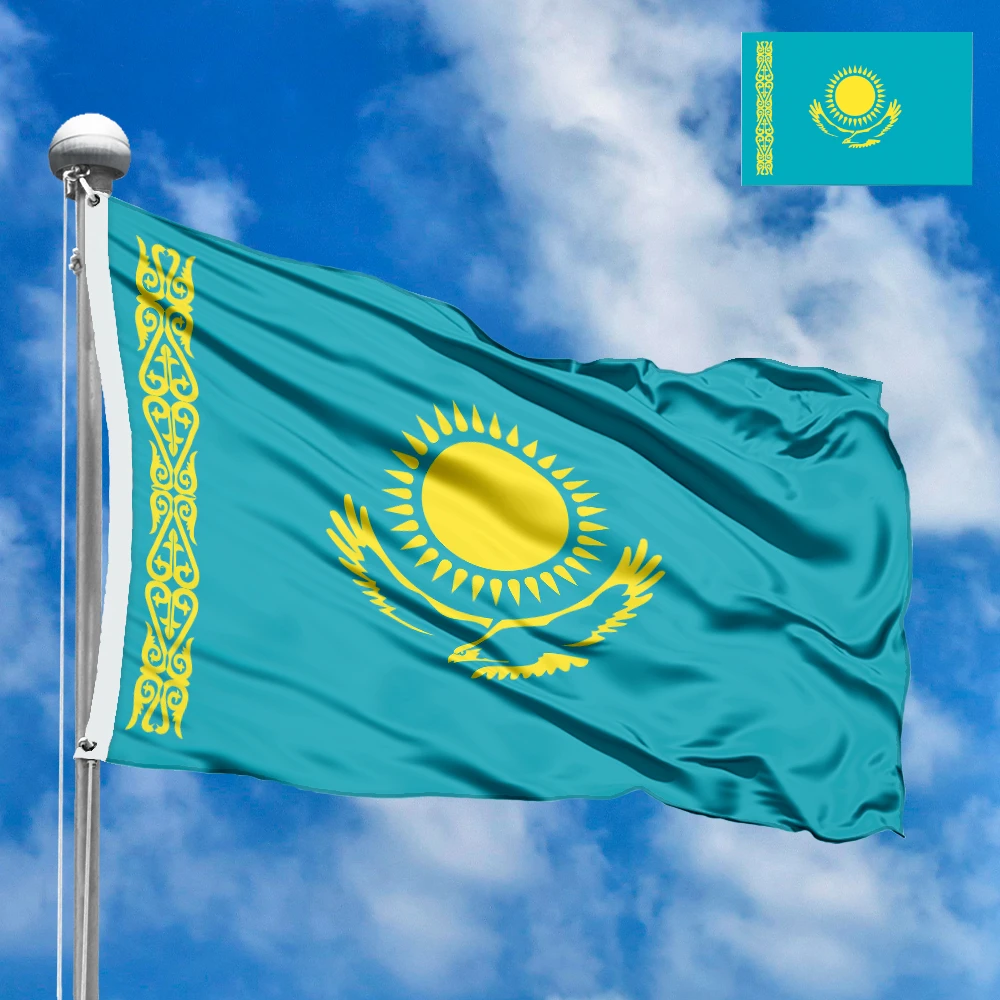

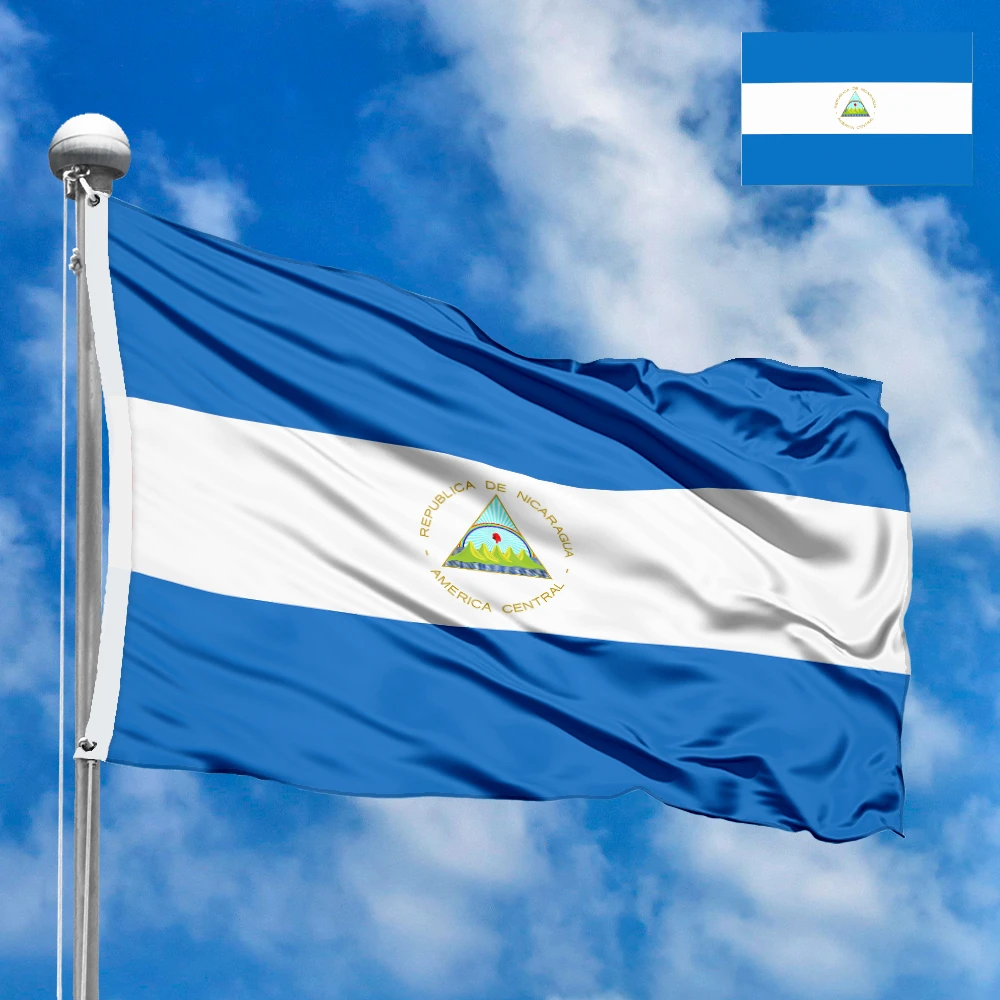
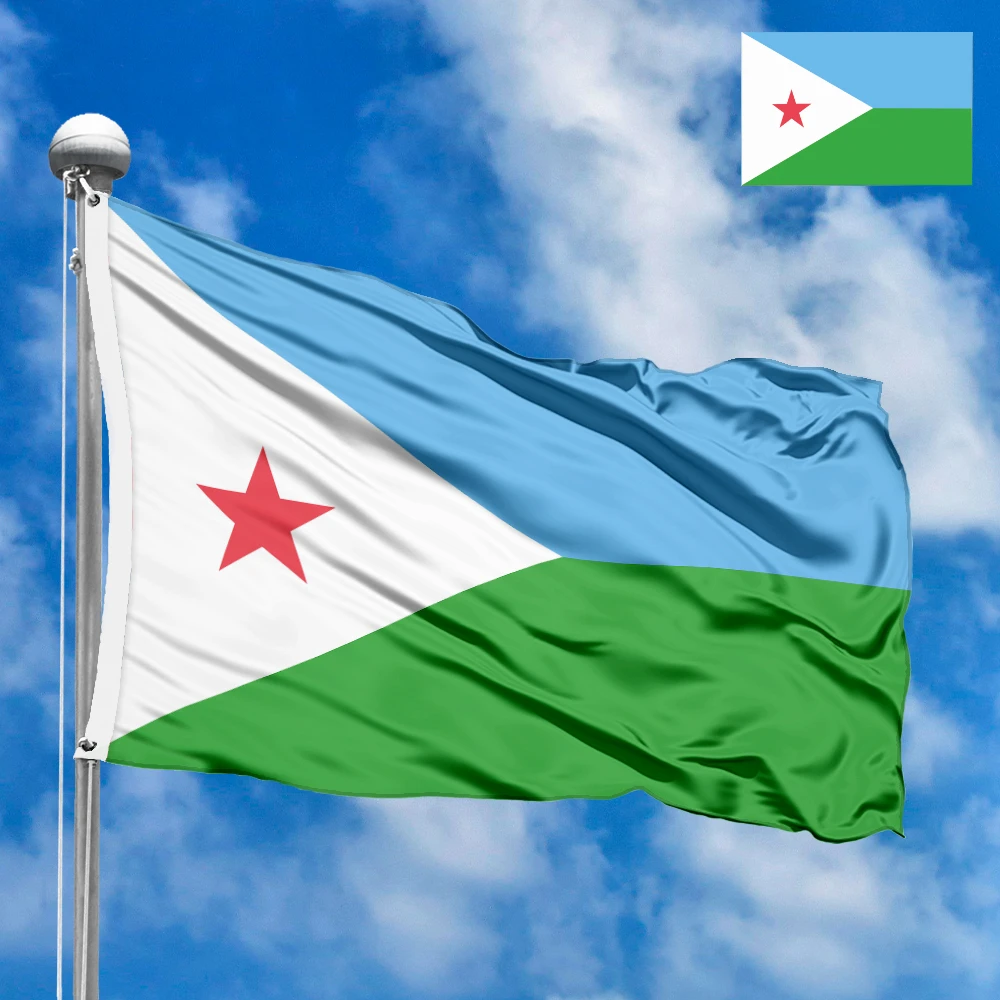
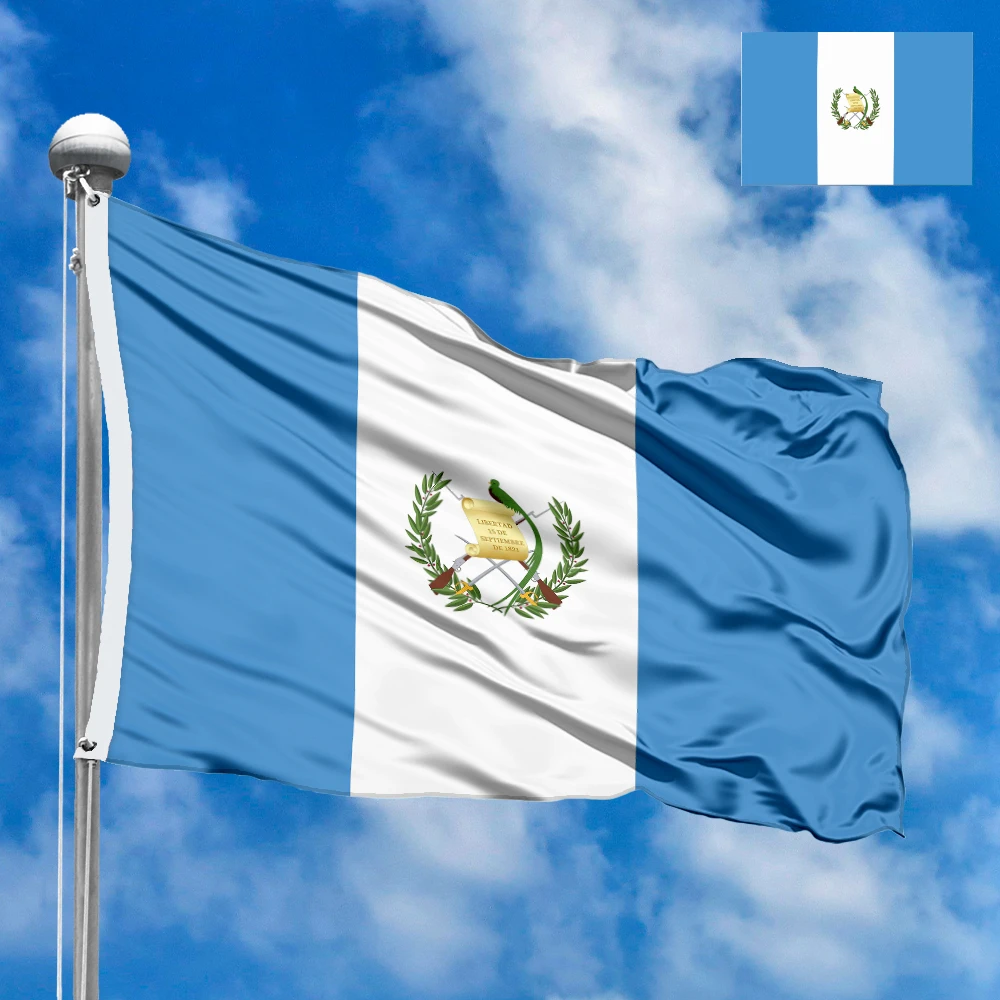




 Waving flag
Waving flag
 Sizes:
Sizes:
 Round flag
Round flag
 Sizes:
Sizes:
 Rectangular flag 2:3
Rectangular flag 2:3
 Sizes:
Sizes: